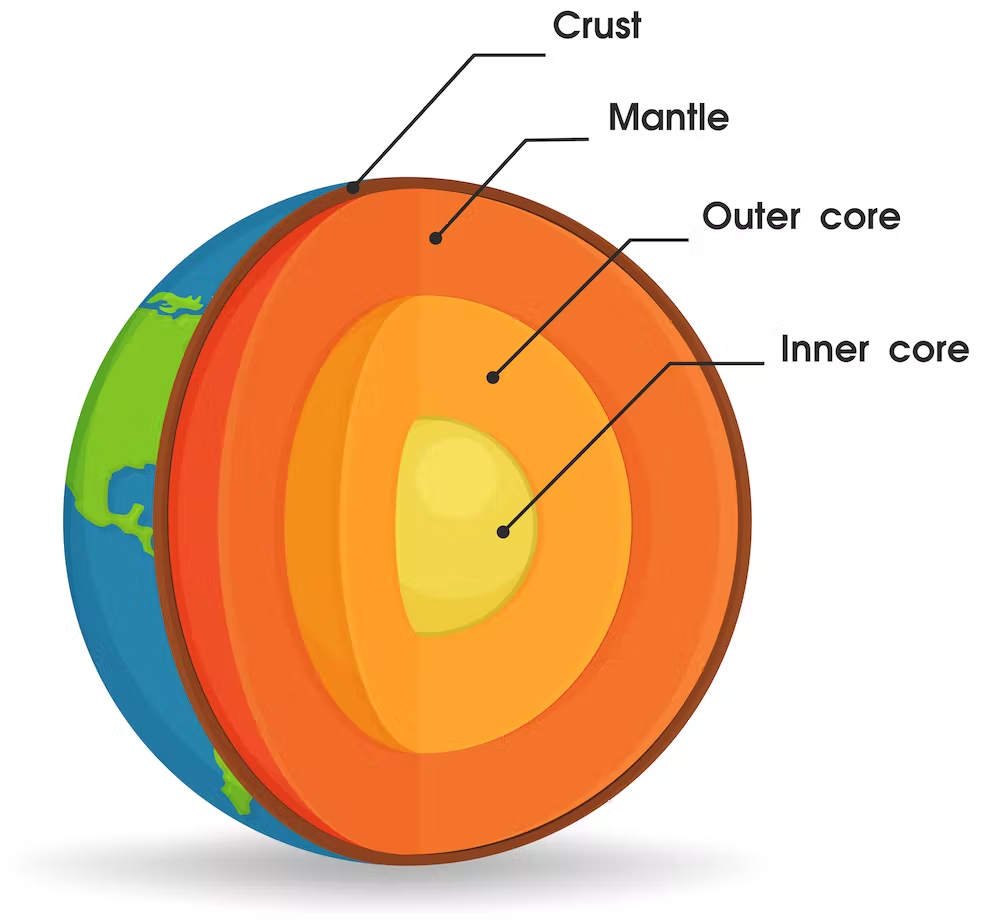Is Earth's core rusting?
Deep below Earth’s surface 2,900 kilometers
deep, to be precise is a mass of mostly molten iron forming the planet’s outer
core. Could it rust as well?
Iron on Earth’s surface—whether
in simple nails or mighty girders—reacts gradually when exposed to moist air or
oxygenated water through a chemical reaction known as oxidation. The
reddish-brown product of this reaction is rust.
A new study claims that the earth's
core is rusting. rusting happens when the iron is exposed to moist air and
oxygenated water leading to a chemical reaction leaving a reddish residue
behind and making the iron weak.
Since the core is situated
2900kms below the earth's surface it was assumed that the high pressure
environment and lack of water-bearing minerals have protected the iron in the
core from rusting. But recent experiments suggested that rust can form at high
pressures and could possibly be formed at locations where water from the
earth's crust has sunk to the core-mantle boundry.
In the experiment, scientists
conducted experiments in conditions that exist in the earth's core. they
introduced water to iron through a hydroxyl-bearing mineral and at a pressure
of 1Million atm scientists noted that it produced iron peroxide having the
structure same as pyrite. In other words, the oxidation reactions in these
experiments do, indeed, form high-pressure rust.
If rust is actually present
where the outer core meets the mantle (the core-mantle boundary, or CMB),
scientists may need to update their view of Earth’s interior and its history.
This rust could shed light on the deep-water cycle in the lower mantle and the
enigmatic origins of ultralow-velocity zones (ULVZs)—small, thin regions atop
Earth’s fluid core that slow seismic waves significantly.
It could also help answer
questions about the Great Oxidation Event (GOE), which marked the beginning of
Earth’s oxygen-rich atmosphere some 2.5 billion to 2.3 billion years ago, and
the Neoproterozoic Oxygenation Event 1 billion to 540 million years ago, which
brought atmospheric free oxygen to its present levels.
References:-
https://www.theguardian.com/science/2022/may/25/terrawatch-earth-core-rusty-atmosphere
https://education.nationalgeographic.org/resource/core
https://www.sciencedaily.com/releases/2022/01/220121145420.htm
NOTE:-
This blog is meant for Educational purposes only. We do not own any Copyrights related to images and information; all the rights go to their respective owners. The sole purpose of this blog is to Educate, Inspire, Empower, and create awareness in the viewers. The usage is non-commercial(Not For Profit), and we do not make any money from it.
Blog Credits: Ojas Tumbde (TY Metallurgy)
FOLLOW US ON:-
INSTAGRAM :
https://bit.ly/coep_blogs_insta
LINKEDIN:
https://bit.ly/coep_blogs_linkedIn
YOUTUBE:-
https://bit.ly/Coep_blogs_YouTube




Comments
Post a Comment